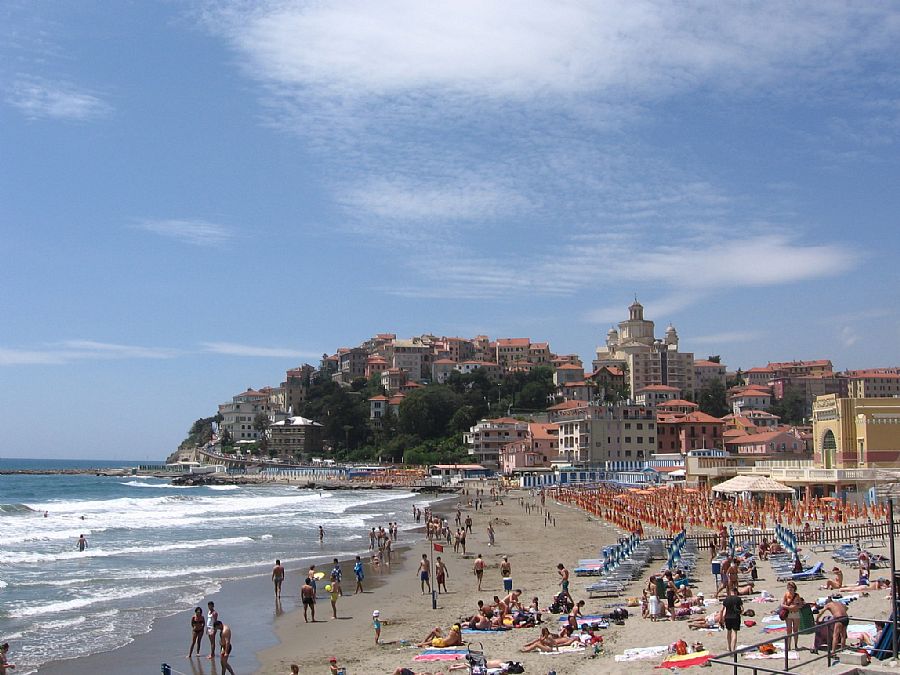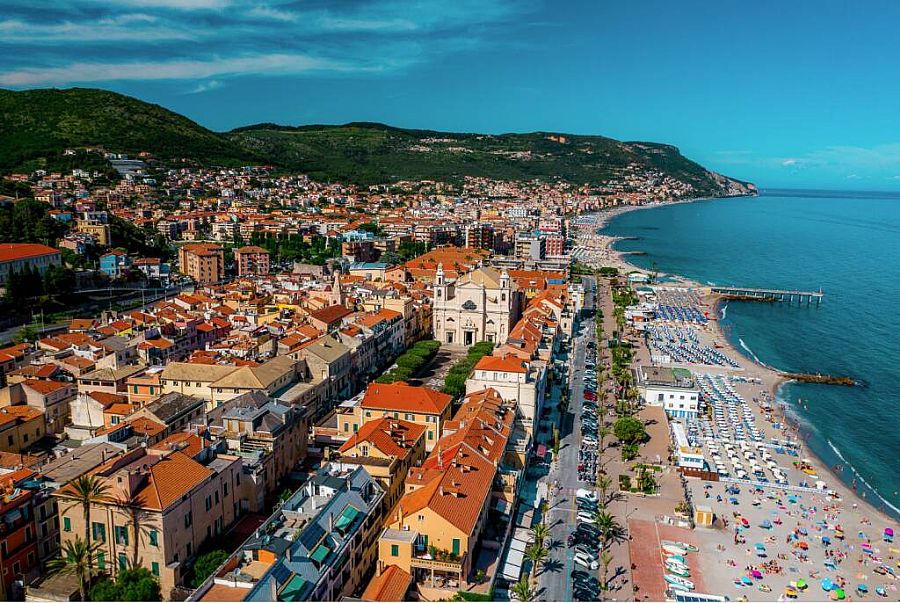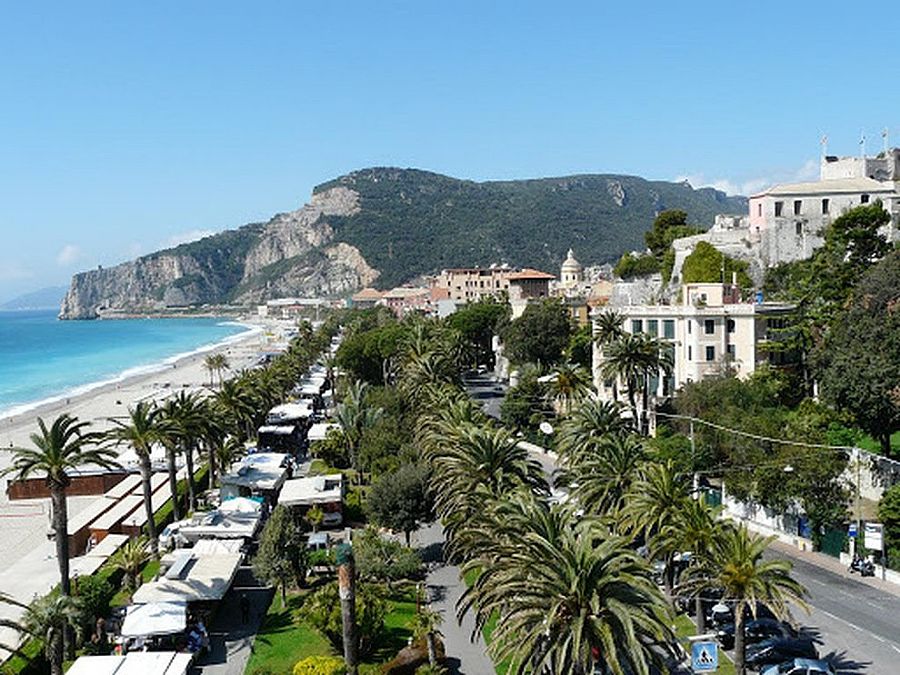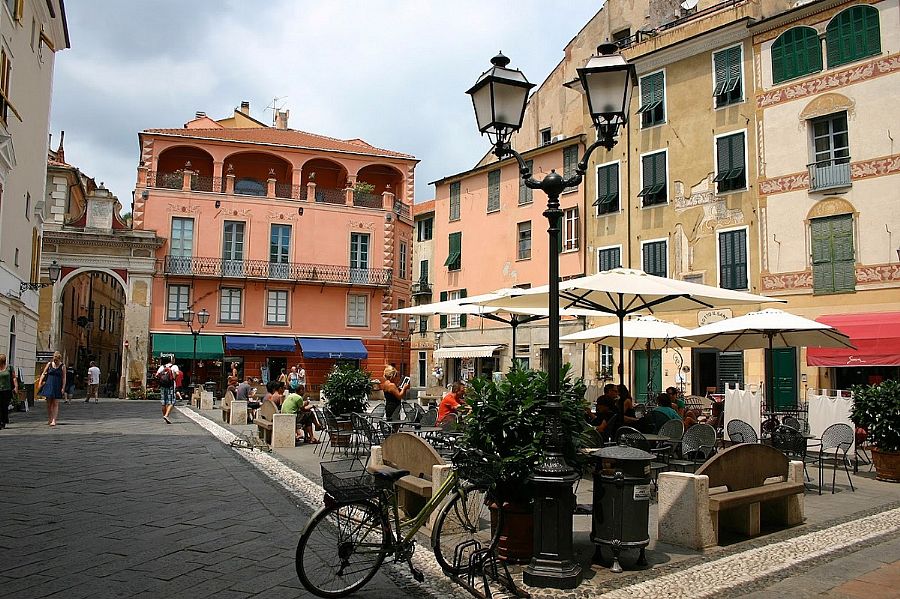Imperia

The Ligurian city is one of the region's most unusual and yet charming, with its hill hamlets, and seaside city along the Riviera dei Fiori. On the western riviera between Sanremo and Albenga, it's in a flower growing area, hence "riviera dei fiori" but the most unusual thing about Imperia is that it only became a city in 1923 when 12 communities joined together to form one comune. Another oddity is its duality: it has two centers, two train stations, and two ports. That's because it brought together rival towns Oneglio and Porto Maurizio, which were separate by the Torrente Impero. A bridge was constructed between them to span the river in 1842, but they didn't truly coalesce until the city was formed and the town hall built at the half-way point between them. Today, Imperia is along the shore, but the ambiance of Oneglio and Porto Maurizio respectively are still distinct. There are other charming districts, and historic hamlets in the hills that collectively are part of Imperia.
Porto Maurizio is on the Parasio promontory and was the economic and commercial town built in the medieval period. Oneglia sprang up on the plain at the mouth of the river after the year 1000 AD and became a feudal holding of the Biship of Albenga, then passed to the Doria family (the birthplace of Andrea Doria is here), and the Savoys. Porto Maurizio was allied with Genova. The location with sea coast, hill towns and the Alpi Liguri beyond offers up tons of enjoyment for visitors to not be bored. As for as foods, be sure to taste the torta verde, a savory tart filled with eggs, cheese and bietola (chard). Le rostelle are grilled skewers of lamb, while the piscialandrea (dialect for "pizza Andrea" for Andrea Doria) is the local focaccia with tomato sauce, fresh anchovies, black olives, and capers. Speaking of olives, the local variety is olive taggiasche, small black olives, often stored in olive oil. Of course, seafood is a staple here.
Oneglia
Visit the baroque splendor at San Giovanni Battista church, built in the 1700s. It mimics the church of Santa Maria della Quercia in Rome. The Liberty-style Villa Grock was contructed in 1930 that some call fanciful and some call bizarre, with splendid gardens. Santa Maria Maggiore was built in the 5th century, destroyed in the 10th century and redone in Baroque style. It offers panoramic views.
The port area showcases the old fishermen's homes in pastels along the waterfront, and the remains of the antique protective walls. Enjoy a walk along the quay, known as Calata Cuneo, where great restaurants, cafes and ambiance await. The old fishermen tied up their boats here but in bad storms were dashed on the harbour and water entered their houses located right there. The Palazzo Doria was the birthplace of Andrea Doria
Porto Maurizio
On the promontory Parasio, it is a charming tangle of lanes and palazzi with tucked-away corners, stair-stepped streets, sudden overlooks, and plenty of sights. This is where the primary attractions are found, that include churches, museums, and lots of cafes and restaurants. The Duomo dedicated to San Maurizio is the largest church in Liguria, built in neoclassic style between 1781-1832. Don't miss the Oratorio di San Pietro, tand the logge of the convent of Santa Chiara with its framed views of the sea below (and buy some of the lemon marmalade made by the cloistered nuns still living in the convent). The church of the Cavalieri di Malta (Knights of Malta) was built in 1362. The international naval museum, civic art gallery, Teatro Cavour, and via Caterina with its pretty pastel "tower houses" shouldn't be missed.
OTHER SIGHTS
Borgo Marina is below the promontory, the boat marina where fishing boats, sailboats and yachts all dock. Borgo Prino ambles along the seafront with a long promenade and connects to Borgo Foce. It has beaches, cafes, and nightlife, and is where you can rent kayaks and pedal boats.
Borgo Foce is an attractive old seaside district that was a fishing hamlet with cute homes, narrow lanes, and waterside walkways. The best is known as la passeggiata degli innamorati (walkway of lovers). There are many good seafood restaurants here.
Head to the hills to Imperia's frazioni hamlets, for hilltown exploring, and a different cuisine than you find at the sea. There are chapels and rugged terrain, hiking and horse riding, along with green tranquil natural beauty.
Go along the coast to see famous Sanremo or smaller Diano Marina, low-key San Bartolomeo a Mare, or if you feel ambitious for driving you can even visit Monaco!
Browse carefully selected rental villas in Imperia.

 Amalfi Coast
Amalfi Coast Sorrento Coast
Sorrento Coast Tuscany
Tuscany Cilento National Park
Cilento National Park Lake Como
Lake Como Rome and Latium
Rome and Latium Umbria
Umbria Capri and Ischia
Capri and Ischia Venice
Venice Puglia (Apulia)
Puglia (Apulia) Liguria
Liguria Sicily
Sicily Lake Maggiore
Lake Maggiore Lombardy
Lombardy Sardinia
Sardinia Lake Garda
Lake Garda Abruzzo and Marche
Abruzzo and Marche Calabria
Calabria


Been there? Done that? Share your experience and tips!
Haven't visited yet? Have questions about Imperia? Ask them here!